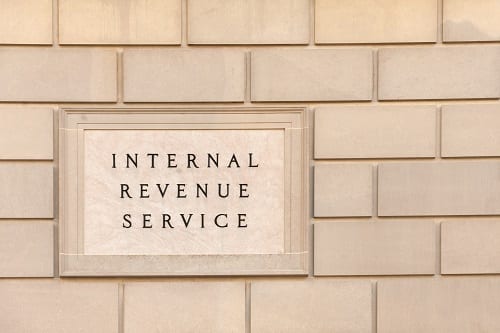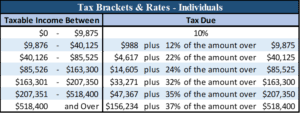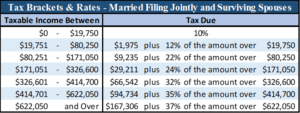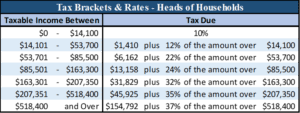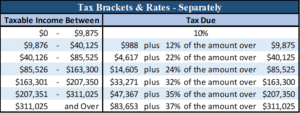Beginning on Jan. 1, 2020, the Internal Revenue Service (IRS) has new annual inflation adjustments for tax rates, brackets, deductions and retirement contribution limits. Note, the amounts below do not impact tax filing in 2020 for the tax year 2019. These amounts apply to 2020 taxes that will be filed in 2021.
Tax Rates and Brackets
Below are the new 2020 tables for personal income tax rates. There are separate tables each for individuals, married filing jointly couples and surviving spouses, heads of household and married filing separate; all with seven tax brackets for 2020.
Trusts and Estates have four brackets in 2020, each with different rates.
Standard Deduction Amounts
Amounts for standard deductions see a slight increase from 2019 to 2020, based on indexing for inflation. Note that again as in 2019, there are no personal exemption amounts for 2020.
Alternative Minimum Tax (AMT) Exemptions
Like the above, the AMT exemption amounts are increased based on adjustments for inflation, with the 2020 exemption amounts as follows.
Capital Gains Rates
Capital gains rates remain unchanged for 2020; however, the brackets for the rates are changing. Taxpayers will pay a maximum 15 percent rate unless their taxable income exceeds the 37 percent threshold (see the personal tax brackets and rates above for your individual situation). If a taxpayer hits this threshold, then their capital gains rate increases to 20 percent.
Itemized Deductions
Below are the 2020 details on the major itemized deductions many taxpayers take on Schedule A of their returns.
- Medical Expenses – The floor remains unchanged from 2019 to 2020, so taxpayers can only deduct expenses that exceed 10 percent of AGI.
- State and Local Taxes – The SALT deductions also remain unchanged at the federal level with a total limit of $10,000 ($5,000 for married filing separately).
- Mortgage Deduction for Interest Expenses – The limit on mortgage interest also remains the same with the debt bearing the interest capped at $750k ($375k for married filing separately).
Retirement Account Contribution Limits
Finally, we look at the various retirement account contribution limits for 2020.
- 401(k) – Annual contribution limits increase $500 to $19,500 for 2020
- 401(k) Catch-Up – Employees age 50 or older in these plans can contribute an additional $6,500 (on top of the $19,500 above for a total of $26,000) for 2020. This $500 increase in the catch-up provision is the first increase in the catch-up since 2015.
- SEP IRAs and Solo 401(k)s – Self-employed and small business owners, can save an additional $1,000 in their SEP IRA or a solo 401(k) plan, with limits increasing from $56,000 in 2019 to $57,000 in 2020.
- The SIMPLE – SIMPLE retirement accounts see a $500 increase in contribution limits, rising from $13,000 in 2019 to $13,500 in 2020.
- Individual Retirement Accounts – There are no changes here for IRA contributions in 2020, with the cap at $6,000 for 2020 and the same catch-up contribution limit of $1,000.
Conclusion
There are no dramatic changes in the rates, brackets, deductions or retirement account contribution limits that the vast majority taxpayers tend to encounter for 2020 versus 2019. Most changes are simply adjustments for inflation. Enjoy the stability – as history has shown, it likely won’t last long.





